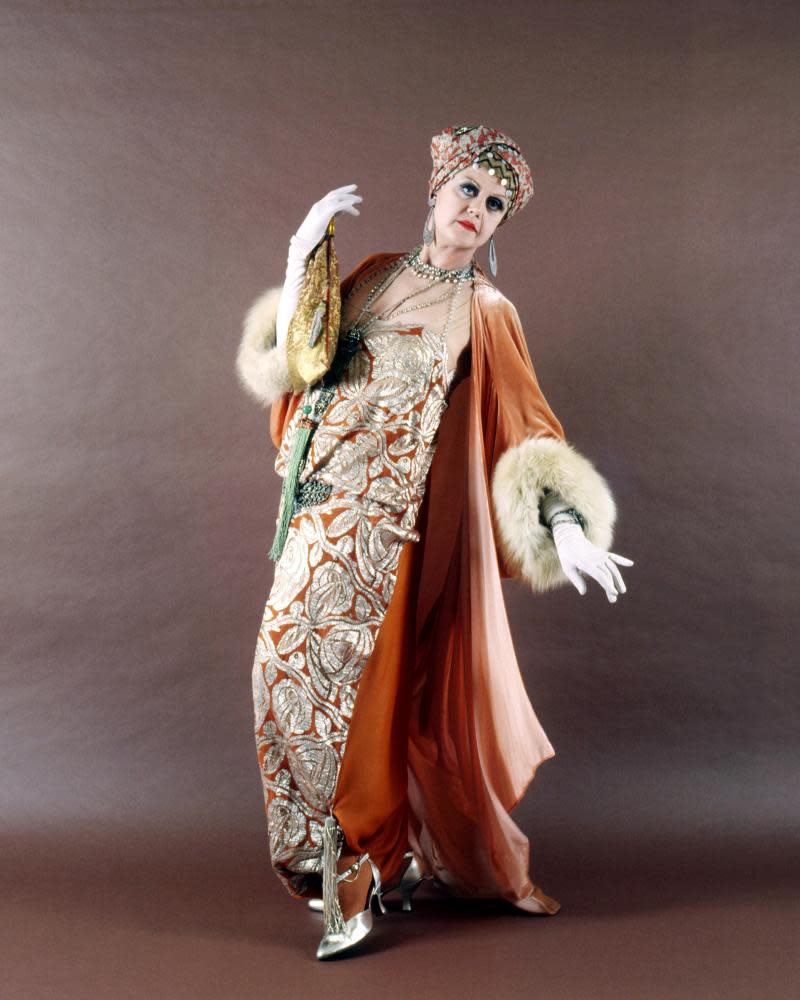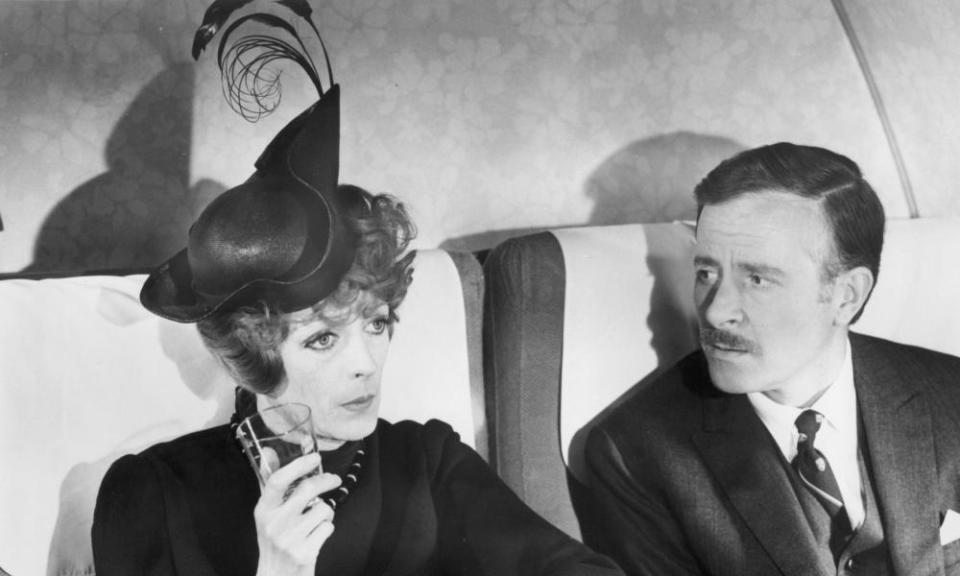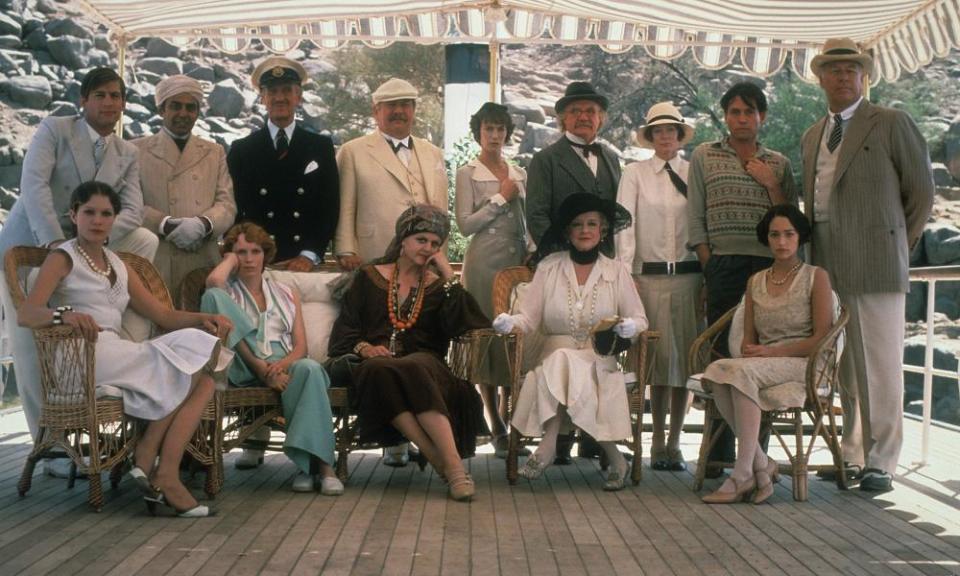Anthony Powell obituary
Salome Otterbourne, romantic novelist and prospective corpse, enters on screen in Death on the Nile (1978) with a couple of sloshed bons mots and an ostentatious tango. Angela Lansbury plays her as a comic monster, supported by Anthony Powell, who designed Salome’s turban and vampish dress. The exotic ensemble is an instant biography – Salome had had enough money to buy it when it was modish a decade before, and still considers herself irresistible in it, fringes thrashing her partner.

Powell, who has died aged 85, won his second Oscar for sewing a back-story for every character in that film, including Bette Davis’s dowager who, like many older female characters Powell dressed, never moved beyond the fashion of her prime. He supplied narrative wardrobes for the men too; as an in-joke, the tie of David Niven’s colonel is in the colours of Niven’s own wartime rifle regiment, and Powell established, for Peter Ustinov, the natty-spats neatness of Hercule Poirot.
Powell’s details were as useful to actors as director’s notes, while directors could rely on him entertaining the eye. Scenes in Death on the Nile often happen in confined shipboard spaces where all the glamour is on the cast’s backs.
He had already won an Oscar for Travels With My Aunt (1972), only his second film, in which he outfitted Maggie Smith’s grande dame for flashbacks to her early 20th-century scandalous past, and even more flamboyantly for old age. Her styles reflected the retro interests of 1972, and were frequently actual vintage textiles. Powell collected fabrics and trimmings for research and inspiration: “One day they’ll be perfect for something.” They always were.

In pursuit of the unique right thing, Powell persuaded a famous costume-maker to expend her own collection of vintage beads on a one-off gown for Kate Capshaw for the beginning of Indiana Jones and the Temple of Doom (1984). But that scene had to be filmed last, after Capshaw had worn the garment hard on location and wildlife chomped at it while it hung over a jungle branch. He flew the maker and her last few beads to London to restore it for the opening sequence, and filled in the insurance claim: “Elephant ate dress”.
He could testify to the elephant because as usual he was present during shooting, even when that meant wading into a mangrove swamp to make sure the ragged prison uniform he had hand-distressed for Dustin Hoffman, starring in Papillon, in 1973, was donned correctly. Powell put as much research into the rags of the poor as into extravaganzas because he meant all costumes to feel as forgettably natural on players as their own skins.

His third Oscar was for Roman Polanski’s Tess (1979), in which the hard-work wear of Thomas Hardy’s farmgirls was as important as Nastassja Kinski’s kept-woman finery, and he was delighted when extras took their outfits home to live (and sleep, except for corsets) in before and during filming, translating them into real clothes. This showed in every shot, and cinema’s period rustics have been different since.
Powell’s 1880s cowboy work-gear, and authentically inauthentic period-showbiz frontier wear, in Robert Altman’s 1976 Buffalo Bill and the Indians, with high-laced boots, high-crowned hats and long-rider coats, permanently changed what the west wore in movies.
He often fixed details personally because his immersion in theatre had been practical from the start. He was born in Charlton-cum-Hardy, Manchester, to Arthur Powell, a teacher, and his wife, Alice (nee Woodhead), both dedicated theatregoers; Arthur died when his son was young and Alice remarried.
Anthony went to William Hulme’s grammar school, then St Andrew’s college in Dublin, but he believed his proper education was the gift of a model theatre for which he wrote scripts, and made costumes and scenery, putting on public performances as a teen. His stepsister sent his bulging design portfolio to the producer Christopher West at Covent Garden, who critiqued it as if he were an adult pro, and passed him to Jeanetta Cochran, theatre supremo at the Central School of Arts in London. She held a place until after his national service.

As a student he moonlighted making hats and jewellery for West End shows, later setting up his own theatrical accessory business while lecturing at the college and working as a problem-solver for the stage designers Oliver Messel and Cecil Beaton. His first solo production design, The School for Scandal (1963), the result of a recommendation from its star, John Gielgud, was a novel version of the 1780s, with striped stockings on its fops. It brought him his first Tony award for costume design.
His movie career began one morning in 1971 when the production designer John Box phoned to ask if he could board a plane to Zagreb that afternoon to dress several thousand extras as Russian revolutionaries for the epic Nicholas and Alexandra. Powell gratefully took the chance, but stayed fond of theatre, working occasionally in musicals (Anything Goes, National Theatre, 2002) and opera, and full-time for several years from 1993 gowning many Norma Desmonds in Andrew Lloyd Webber’s Sunset Boulevard; he imagined her as another ageing woman clinging to the fabulous fashions of her silent movie youth.
Among Powell’s Normas was Glenn Close, who totally trusted him. For Cruella de Vil, the diva villain of Disney’s 1996 live action 101 Dalmatians, and its sequel, she told him: “You do all the clothes and then I shall look in the mirror and know how to play the part.”
He had fun sending up his most un-sit-downable-in fashionista outfits of the previous decades (her gloves with sharp fingernails are particularly wicked), and she riffed off his giggles.
He is survived by two nieces.
• Anthony Powell, costume designer, born 2 June 1935; died 18 April 2021

 Yahoo Movies
Yahoo Movies 